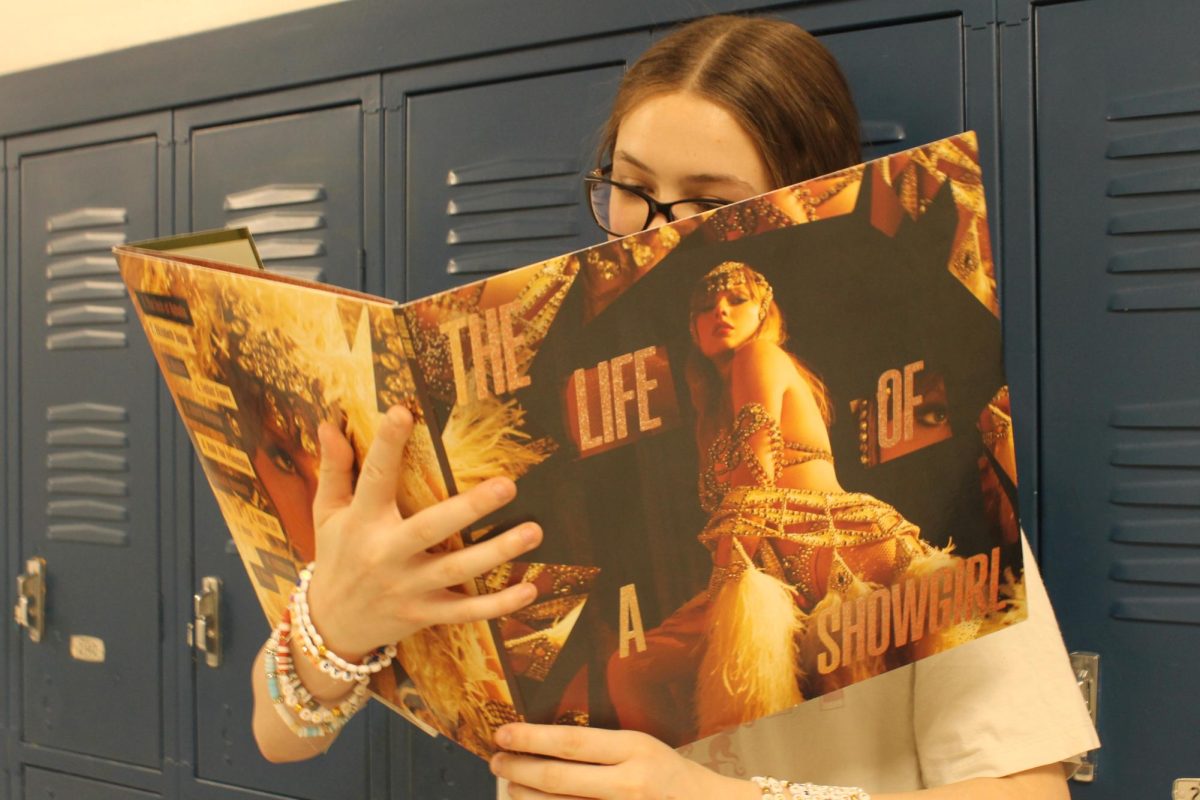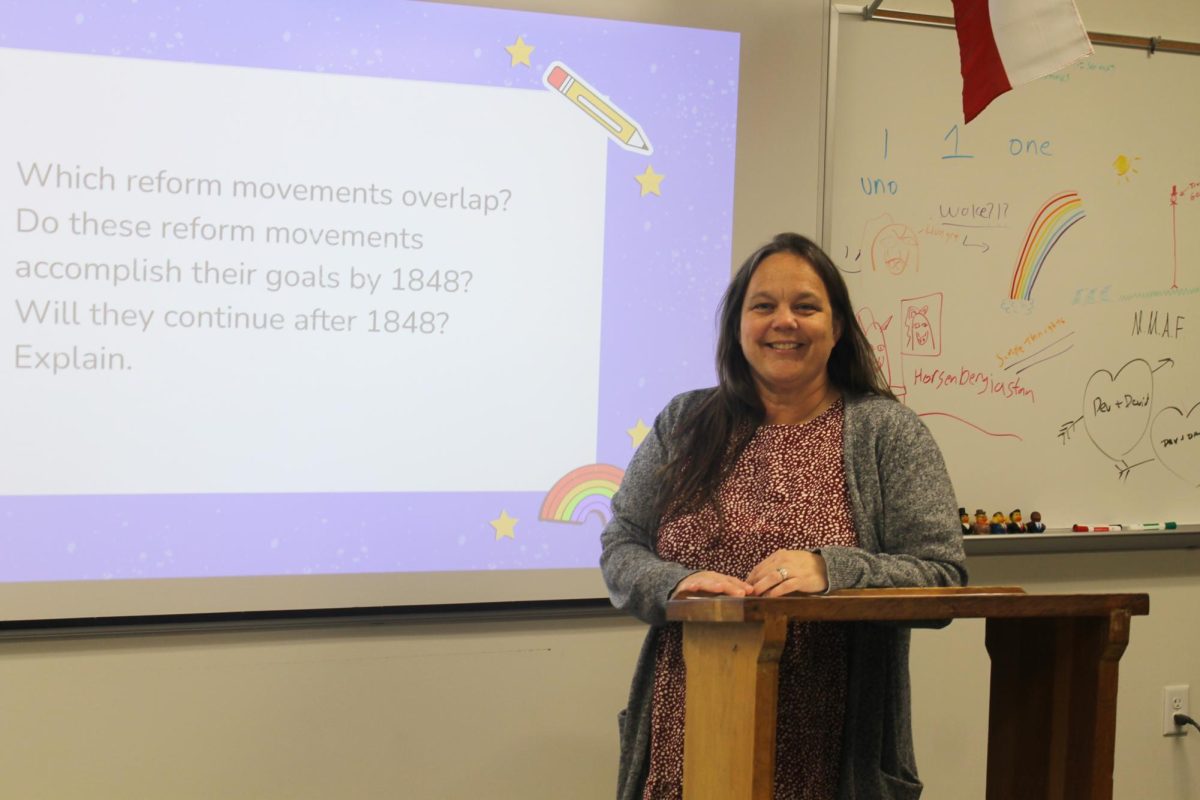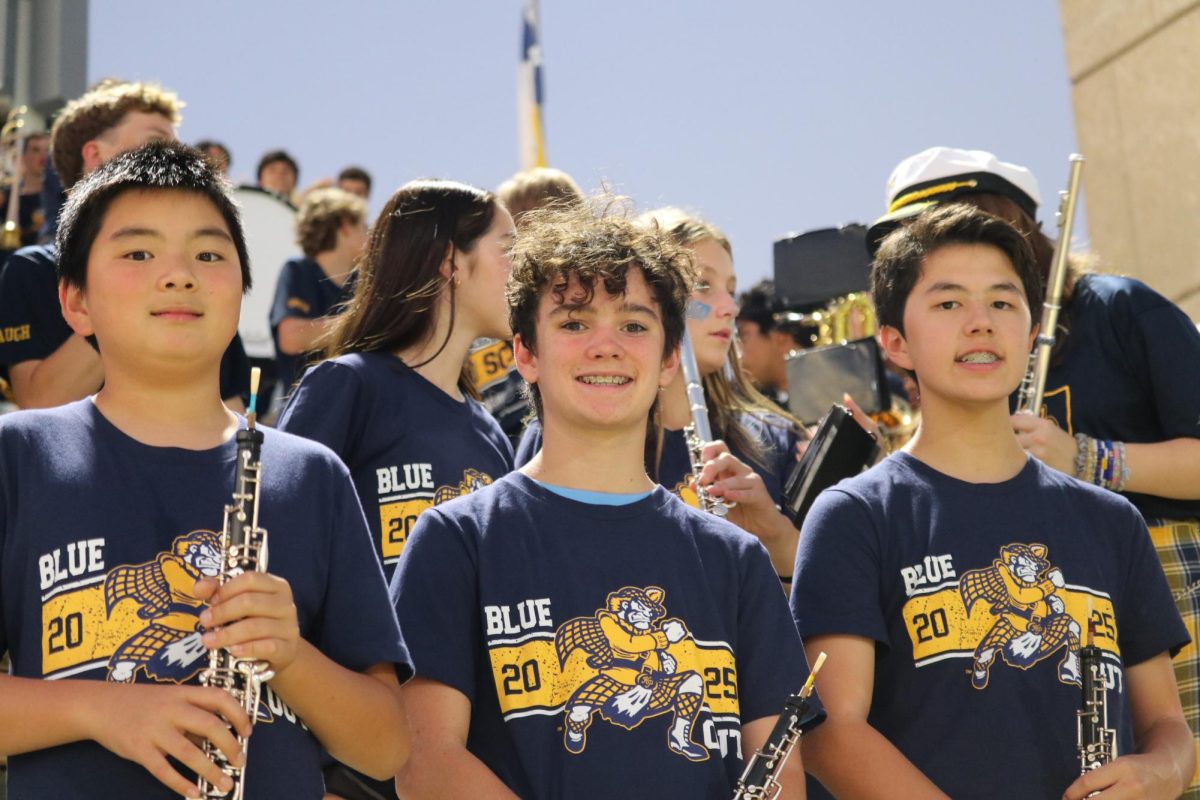On Oct. 3, Taylor Swift came out with her 12th studio album, “The Life of a Showgirl,” marking the beginning of a bold new musical era.
After touring for two years on the record-breaking Eras Tour — releasing two re-recordings and one brand-new album along the way — those 12 brand new songs were unexpected.
For “The Life of a Showgirl,” Swift went all out to create a brand new era aesthetic, with multiple elaborate photoshoots, new sounds, and a big publicity campaign composed of radio interviews and talk shows appearances. For the first time in her career, Swift’s team organized an official release party for the release weekend in theaters. There, she premiered the album’s lead single’s music video, “The Fate of Ophelia”.
This is not the first time fans are able to see Swift in theaters. Back in 2023, she premiered “The Eras Tour”, the filmed version of her tour. This time, the almost two-hour film centered around the production of the album, behind-the-scenes shots of “The Fate of Ophelia,” music video, as well as providing backstory to some songs.
With her new music video, Swift expresses the album’s theme perfectly. The video goes through the lives showgirls lead during different time periods. She went all out by having multiple scenes, each with its own elaborate decor and costumes. To reference back to the Eras Tour, she reunited all the Eras Tour crew, from the dancers to the technicians.
With the lead single, Swift gives fans flashbacks to her 17-year-old song, “Love Story.” In terms of melody, the songs are different, but their lyrics share a common theme. Both songs take inspiration from Shakespearean tragedies. Swift revisited them to give the stories a happy ending. “The Fate of Ophelia” turns the tragic death of Ophelia in Hamlet into a love song talking about the struggle of her love life with a happy twist.
The first three songs of the album transport you back to Swift’s “Lover” era because of their upbeat tune and romantic atmosphere. “The Fate of Ophelia,” “Elizabeth Taylor,” and “Opalite” express how Swift’s past relationship almost made her lose hope, but meeting the right person changed her life in the best way possible.
The record’s ambiance shifts when “Father Figure” starts to play. listeners go from romantic songs to hearing Swift’s voice take on a darker tone. The track is emotional, with slow production mirroring the sensitivity of her lyrics. Swift uses vivid imagery and metaphor to pass on her emotions to the audience.
Swift is known to put the most personal songs on her records as the fifth track. “Eldest Daughter” is no exception. Lyrically, it shares the same theme as the first 3 tracks, the tale of a love story that saved Swift. But, for this song, she adds flashbacks from when she was younger, making the record feel all the more personal. The beat stands out as more gentle and slow compared to the rest of the songs.
At first glance, the song “Actually Romantic” seems to be a love song like most of the songs on “The Life of a Showgirl.” Listening closely reveals this is actually not the case. As Swift explained during the release party in theaters, “Actually Romantic” is a song about how she feels when someone criticizes her. Instead of being sad or angry, she takes it more like “thank you for thinking about me.”
The title track of “The Life of a Showgirl” marks the first collaboration between Swift and Sabrina Carpenter. After Carpenter opened multiple shows on the Eras Tour and performed twice on stage with Swift, a collaboration between the two artists was long anticipated by both fandoms. With a very evolving theme that goes from a life-saving love to the struggle experienced by Swift in the music industry, the title track is a great way to conclude the album.
“The Life of a Showgirl” instantly became one of my favorite Taylor Swift albums. It feels like watching her story unfold through each track, blending vulnerability, persistence, and confidence. “The Life of a Showgirl” is proof that Swift is still an artist who knows how to surprise her audience, even after almost two decades of dominating the music industry.










